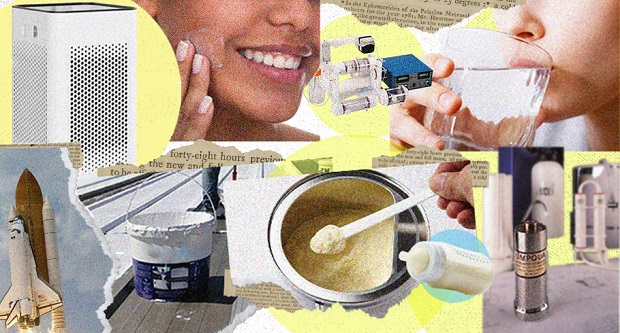We owe many of the things we take for granted in our day-to-day lives to discoveries and advances in space science.

The Philippine Space Agency (PhilSA) recently came out with a list of everyday items that are direct spinoffs from technologies that were originally developed for space.
One very common example of such down-to-earth technologies is the infrared thermometer — the same kind that the mall guard uses to check your temperature before entering the premises. The electronic sensors in these devices are very similar to ones developed and used by space agencies around the world to study the stars and the weather on Earth.
Air purifiers

PhilSA credits the development of air purifiers — a common sight these days in urban homes, especially in the smog-filled metropolis — to the US space program. The devices were initially developed as a way to remove the chemical ethylene from spaceships.
Ethylene is naturally emitted by stored fruits and vegetables, but can hasten the ripening and shorten the shelf life of produce. These air purifiers use mechanical and chemical filters to “scrub” the ethylene from the air, hence they were called “ethylene scrubbers”.
Skin creams

Scientists have long known that in space, without the usual protection offered by Earth’s atmosphere, astronauts could easily get sick from the sun’s unfiltered rays and other damaging radiation. NASA scientist Dr. Thomas J. Goodwin developed a rotating wall vessel (RVW) bioreactor in which he and his team could study cells and organic molecules.
Among their discoveries was a set of biomolecules with healing properties, which was eventually further developed by a private company in 2013 and released as REJUVEL skin cream.
Water Purifiers

Of course, you can’t survive long in space without water. Even in the earliest days of the US space program, NASA was already hard at work figuring out how to recycle water. Hence, NASA’s own sustainable water purification system that’s not too different, at least in principle, to the filter at your kitchen sink.
Insulation paint

Every little bit of protection from the hot summer sun is a big help, so homes these days often turn to house paint that does double duty to look good as well as prevent heat from passing through. And NASA knew this more than anybody: they had to develop a paint that could help rocket components withstand the immense heat of liftoff and reentry.
Baby formula

The last and perhaps most surprising space science spinoff from PhilSA’s list is — surprise! — baby food. As with all the innovations previously mentioned, anything that astronauts brought to space had to be as lightweight and as efficient as possible because there’s no room on a rocket for excess baggage. This is especially true for the food that astronauts had to take with them into space.
If you’ve ever spent some time browsing supermarket shelves looking at the nutritional values and ingredients of food, you’ve probably come across the buzzwords “DHA” and “ARA.” Docosahexaenoic acid (DHA) plays a key role in the development of eyes and nerves, and may also help reduce the risk for cardiovascular disease.
Meanwhile, arachidonic acid (ARA) is touted to help in brain and muscle development. Both of these fatty acids are often included in baby food to help boost children’s early development, and the processes for mass-producing these acids had their beginnings in the space program.
PhilSA is quick to point out that these are just the tip of the proverbial iceberg when it comes to the practical benefits of space science.




